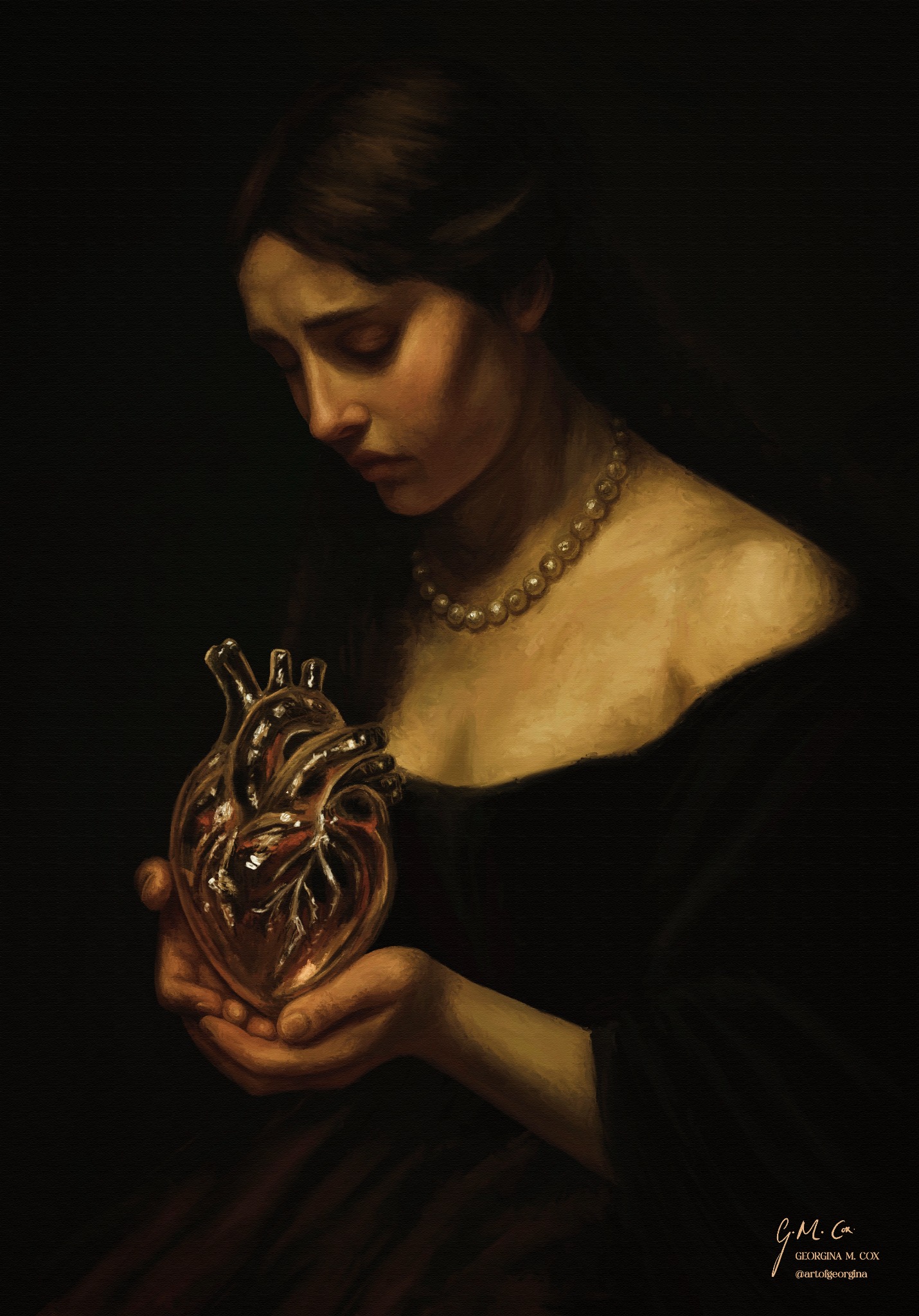
Do Not Touch the Holy Thing (2025)
In Do Not Touch the Holy Thing, Georgina M. Cox explores the fragility of reverence and the boundaries between sanctity and possession. The painting presents a woman gazing downward, her face bathed in low, amber light, her hands cradling a glass anatomical heart. Its translucent surface reveals veins and chambers rendered with exquisite precision, both beautiful and unsettling. The viewer is immediately drawn to the title’s tension: holiness here is not divine in the ecclesiastical sense, but in the deeply human act of self-preservation.
⤷ The woman’s expression is not one of devotion but of mourning. The glass heart becomes a vessel for memory, autonomy, and pain, a symbol of how the body becomes sacred through the act of enduring. The painting’s religious undertones are deliberate: the chiaroscuro, the modest drapery, the downward gaze, all echo classical depictions of Mary Magdalene or saints in lamentation. Yet Cox subverts that lineage. This is no passive figure; she is the custodian of her own holiness, the guardian of a heart that must not be touched, not because it is untouchable, but because it has already been broken enough.
The pearls around her neck, glistening softly against her skin, suggest both grace and restraint. They are the tears of what she has survived, crystallised into decorum. The dark background isolates her entirely; an image of intimacy that borders on confessional. The viewer becomes complicit in her protection, forced to reckon with their own impulse to look, to reach, to possess.
This work captures the moment when reverence and violation coexist: the instinct to honour what is sacred in oneself while knowing how easily others might desecrate it. In the context of Waiting on My Becoming, it speaks to the bodily and emotional autonomy of womanhood: the reclamation of one’s inner sanctum after a history of intrusion.
0 Comments Add a Comment?